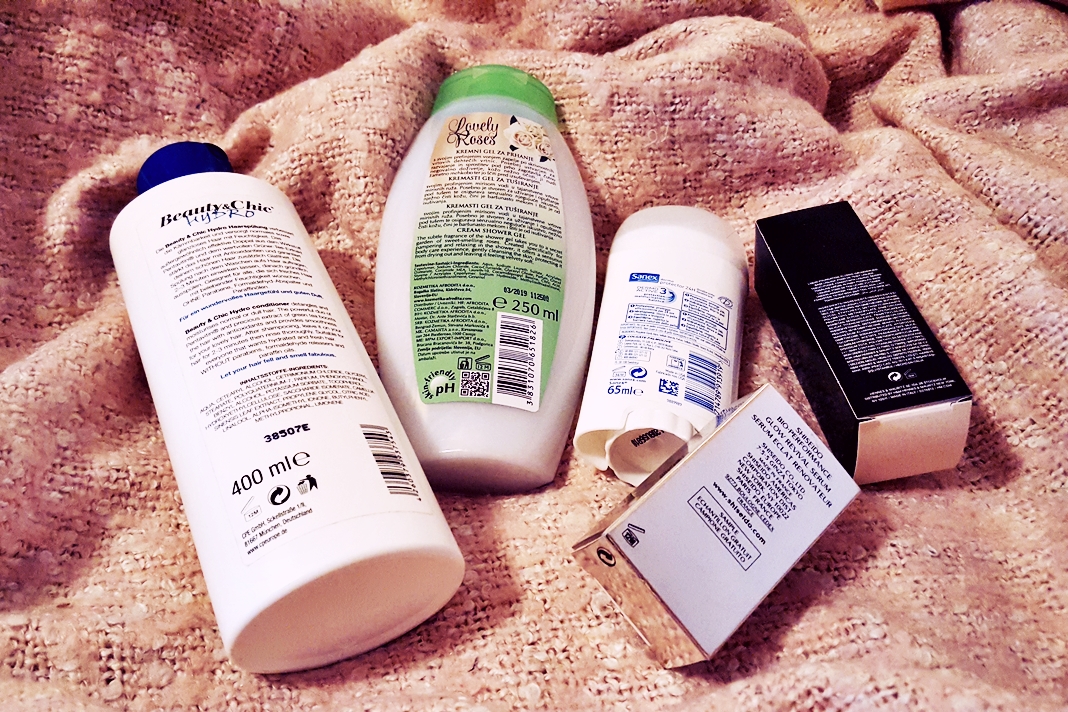I am one of those consumers who are not too concerned with a shelf life of cosmetics before the purchase – unless the best before date is really extremely short. Most of us pay more attention to the shelf life of skin care products than of makeup. Regardless of the declared shelf life, for the stability and quality of the cosmetic product during use it is important that cosmetic products are not exposed to direct sunlight, a prolonged period of strong artificial light, and a source of heat.
If a cosmetic product has a shelf life of less than 30 months, it is necessary to write on the product, to which date it is useful, i.e. minimum shelf life. The hourglass symbol may be used together with the date, but also only the date with the number may be indicated on the product. In addition to indicating the year of the minimum shelf life, at least the indication of the month is obligatory. In a case when the shelf life is shorter than 30 months, the open jar symbol can also be added, where it is written how long after the product has been opened the product is still useful and of the relevant quality.
The second “category” of cosmetic products has a shelf-life of more than 30 months. In such a case, the manufacturer does not have to write a minimum shelf life on the cosmetics product. On these products, the open jar symbol is mandatory and this may also be the only indication of the shelf life of the cosmetic product.
Most makeup products have a shelf-life of more than 30 months, so you’ll find mostly open jar symbols on them without specially stamped minimum shelf life. Pay special attention to the mascara and liquid eyeliners, where I recommend you to mark the date of opening with the label – after the opening, keep the product within the number of months that are written in the open jar symbol. Skin care cosmetics usually have a shorter shelf life than makeup and given the fact that today’s skin care contains many active ingredients, natural oils, and extracts, it is of utmost importance that they are not stored for too long after opening. The effectiveness of specific active ingredients refers to the time of stability within the shelf life – when the ingredients begin to chemically change, they do not only lose their efficiency, but they can even cause a damage to our skin. None of us would like the new anti-aging cream to become an “aging cream” due to its use after the best before date.
The effectiveness of specific active ingredients refers to the time of stability within the shelf life – when the ingredients begin to chemically change, they do not only lose their efficiency, but they can even cause a damage to our skin
Cosmetic manufacturers claim efficiency and stability within the shelf life indicated on the packaging or with the months written in the symbol of the open jar. If you have purchased a cosmetic product and you know that you won’t start using it immediately, it’s best to keep it closed until you are sure you ‘ll use it regularly. In this way, you ‘ll get the best effect out of your cosmetic product.
Perfumes, which are mostly in transparent glass bottles, should not be exposed to direct light or a heat source that can quickly change the fragrance molecules and thus spoil the scent prematurely. Unfortunately, when buying perfumes and testing them in drugstores, I often find inappropriate and bad smalling testers because of the prolonged exposure to light and heat from the light. If your perfume on your skin seems strange and unexpectedly unpleasant, it’s quite possible that the perfume is no longer appropriate and stable.

